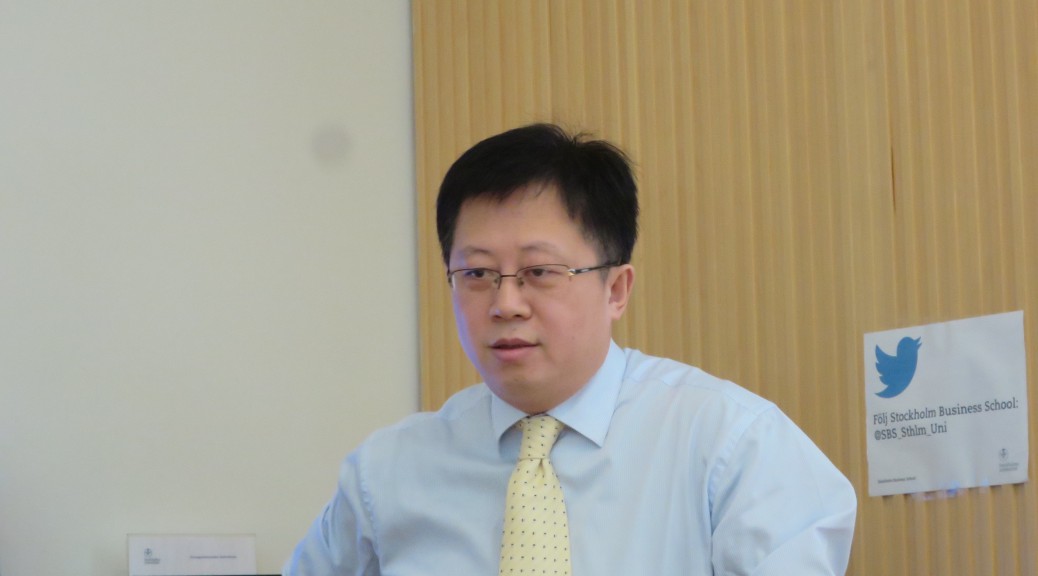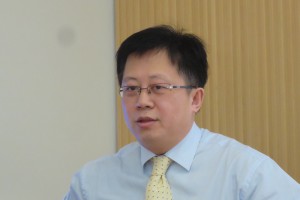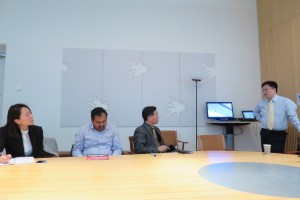By Xuefei Chen Axelsson
STOCKHOLM, Feb. 25(Greenpost)–Chinese Economic &Commercial Counsellor Han Xiaodong at the Chinese Embassy in Sweden attended a seminar on Chinese economy and Sino-Swedish economic and trade relations organised by the Business School of Stockholm University on Thursday.
Economic and Commercial Counsellor Han gave a lecture at Stockholm University. Photo by Xuefei Chen Axelsson
He said Chinese economy is at a “New Normal ” situation transformed from the vicious cycle of high speed, unbalanced structure and being unsustainable to benevolent cycle of reasonable speed, high quality and balanced structure.
Chinese President Xi Jinping has put up forward the strategic development blueprint of belt and road aiming at helping neighbouring countries in Asia and Central Asia along the silk road to develop infrastructure such as fast train.
In Shanghai, the new free trade zone has been established so that the registration time reduced to three days from 10 days.
Through over 30 years of development at a rate of 10 percent on average, China has become the second largest economic community. But the per capita GDP in China is still lagging behind that in developed countries.
For example, China’s percapita GDP in 2015 was 8 thousand US dollars while that in Sweden was 58 thousand US dollars.
Han said last year China’s foreign trade volume reached 3.96 trillion US dollars, down by 8 percent.
Last year China invested 14.8 billion US dollars in 49 countries along belt and road.
Han didn’t forget to mention that there are also some problems in China such as environmental issues, saying that one third of the population are affected by smog.
This was due to the large number of vehicles and the power plants as well as other reasons.
Social security and elderly care, education are also facing great challenges.
Talking about Sino-Swedish trade, Han said bilateral trade volume reached 13.5 billion dollars last year, 3.1 percent down, compared with that of 2014.
Economic and Commercial Counsellor Han gave a lecture at Stockholm University on Feb. 25, 2016. Photo by Xuefei Chen Axelsson
He pointed out that the new potential areas for bilateral trade will be based on China’s huge markets, industrialisation, IT, urbanisation and agricultural modernisation. He said high speed train will be an important product for China’s export.
Financial cooperation, agriculture, life science, green technology and innovation and design are the potential areas for further exchange.
The seminar was hosted by Professor Tony Fang. Two vice professors, one assistant professor and some PhD students attended the seminar held at the business school of Stockholm University.


